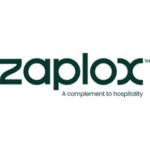 All that talk earlier this year about pent-up demand and revenge travel is finally paying dividends, at least in the leisure segment. But just as the stock market looks ahead to where the world will be in six months’ time, so too must you plan ahead for what the hotel industry will look like after the revelry of the post-pandemic travel recovery has subsided.
All that talk earlier this year about pent-up demand and revenge travel is finally paying dividends, at least in the leisure segment. But just as the stock market looks ahead to where the world will be in six months’ time, so too must you plan ahead for what the hotel industry will look like after the revelry of the post-pandemic travel recovery has subsided.
While hotels could hardly have predicted or prevented the advent of COVID-19, what we’ve witnessed in the latter half of 2020 is an industry that’s largely reactive to macroeconomic forces. Many operators have hinged their hopes on a near-complete reversal to 2019 demand levels and guest expectations without any earnest consideration for structural innovation and becoming more adaptable to the increased volatility in the market.
From our experience working as consultants, asset managers and owner’s representatives, success during turbulent times hinges upon decisive attention at the senior level combined with a thorough comprehension of the roles and responsibilities for the onsite operator, the corporate office team and the owner. Finding the best alignment amongst these entities – which may or may not have different goals – is an initial step that is often overlooked.
So much time is spent in planning meetings and getting approval for changes and new initiatives that operations can easily get bogged down through ‘decision by committee’. In particular, hospitality is more exposed to this problem than other industries given our highly vertical organizational structures and lack of monetary empowerment at the property level. These types of inertial situations can easily be exacerbated by conflicting visions and orders stemming from the three-headed, ‘Cerberus-like’ discord amongst the owners, brand and management company. The key is to find a balance of responsibilities.
One prominent case where having alignment at the senior level is mission critical pertains to the reemergence of groups, starting with reunions, corporate retreats and wedding receptions later this fall in advance of larger MICE-type travel sometime in 2022. With those small group gatherings taking place in the autumn or winter, the planning starts in late spring or early summer, and hotels must have a sales team and group rate plan fully set up to win these contracts.
Far better than a lengthy deliberation over the best possible approach is to implement a reasonably satisfactory course then act quickly to adjust the plan as market conditions evolve. Colin Powell was a believer of the 40-70 rule whereby acting with less than 40% of the information involves too much risk and unpredictability, but at the same time waiting for more than 70% of the information before deciding will stifle the subsequent action. “A good plan violently executed right now is far better than perfect plan executed next week,” stated General Patton, putting the 40-70 rule in different terms.
To enable this ability to pivot, onsite leaders must have a certain degree of autonomy and freedom to act within a proscribed framework. But how do you develop a culture of empowerment? Important for this is succession planning and that many hotels simply aren’t prepared for a return to normalcy because they furloughed too many of their team members.
This is especially evident for sales teams, whereby without key managers kept up to speed on a property’s event capabilities, each RFP cannot be addressed through a preestablished process. This results in teams constantly playing catch-up and reacting week-over-week to new inquiries rather than looking ahead to new initiatives that will advance the hotel’s revenue prospects. A sharp focus on retention means that the onsite operators are totally in sync with ownership and the corporate office, intrinsically knowing how to implement the latter’s directives and hastily deploy resources to make those changes a reality.
Particularly at the senior level, the time to make your organization nimble and imbue a clear command structure for rapid action was yesterday. But, with hindsight being what it is, a close second place would be today. Even with so many changes for the hospitality industry to confront in due course, it’s never too late to chart a course for a profitable decade ahead.
This article may not be reproduced without the expressed permission of the author.

















